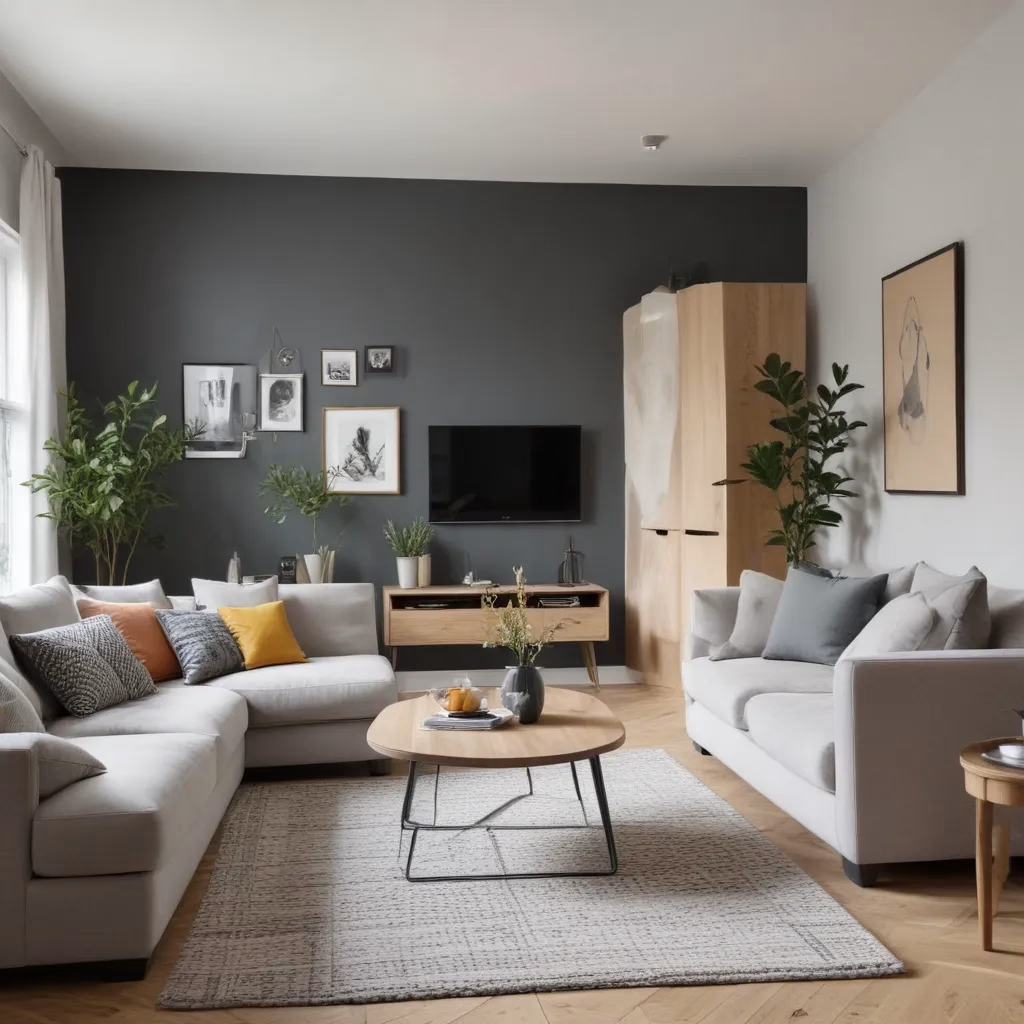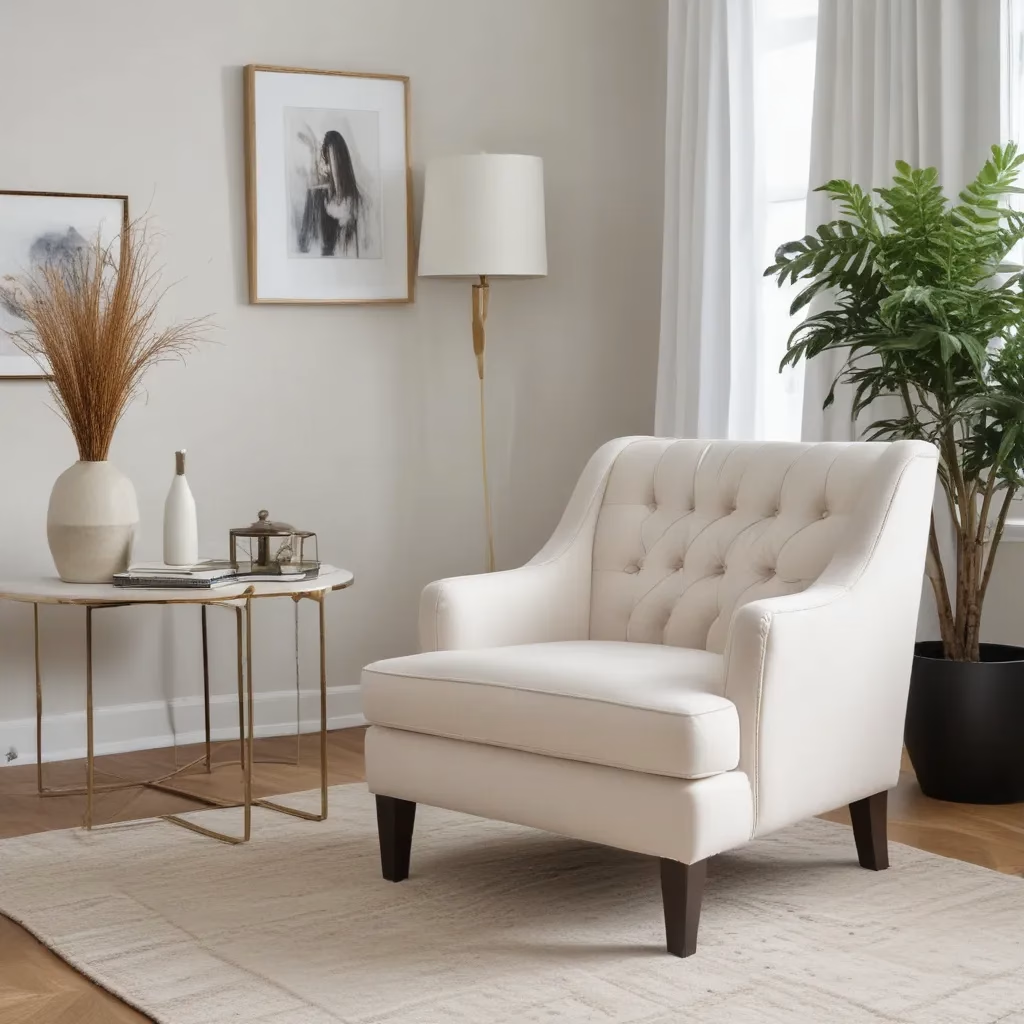
The Evolution of Sofa Design in the UK
In recent years, the UK furniture market has seen a significant shift towards personalized comfort and bespoke design. Sofas, once considered merely functional pieces, have transformed into statement items that reflect individual style and prioritize ergonomic support. This evolution is driven by a growing awareness among consumers about the importance of quality seating in their daily lives.
The trend towards customization has led to a surge in modular sofa systems that allow homeowners to configure their seating arrangements according to their specific needs and room layouts. These adaptable pieces offer the flexibility to create various compositions, from intimate two-seater settings to expansive family-friendly configurations.
Moreover, the emphasis on comfort has never been stronger. UK consumers are increasingly seeking out sofas that offer more than just a place to sit; they want an experience. This has resulted in the development of advanced cushioning technologies and innovative support systems that cater to a wide range of body types and sitting preferences.
Understanding Sofa Construction: From Frame to Fabric
The Foundation: Sofa Frames
The heart of any well-crafted sofa lies in its frame. In the UK market, there’s a notable preference for sustainably sourced hardwoods, with beech being a popular choice due to its durability and resistance to warping. The construction method plays a crucial role in the longevity of the piece:
| Frame Material | Durability | Sustainability | Cost |
|---|---|---|---|
| Beech | High | High | ££££ |
| Oak | Very High | Medium | £££££ |
| Pine | Medium | High | £££ |
| Engineered Wood | Medium | Medium | ££ |
Skilled craftspeople employ traditional joinery techniques, such as mortise and tenon joints, to ensure the frame can withstand years of use. This attention to detail in the frame construction sets the foundation for a sofa that will maintain its shape and support over time.
Cushioning and Support Systems
The comfort of a sofa is largely determined by its cushioning and support systems. UK manufacturers are increasingly using a combination of materials to achieve the perfect balance of softness and structure:
- Pocket Springs: These individually wrapped coils provide targeted support and help maintain the sofa’s shape.
- High-Resilience Foam: Used in various densities, this material offers consistent comfort and bounces back to its original shape.
- Natural Fibres: Materials like wool are gaining popularity for their breathability and eco-friendly properties.
Many high-end sofas in the UK now feature layered cushioning systems. For example, a typical arrangement might include a base of pocket springs, followed by a layer of high-density foam, topped with softer foam and a wool wrap for luxurious comfort.
Upholstery Choices
The final layer of a sofa—its upholstery—is where personal style truly comes into play. UK consumers have shown increasing interest in:
- Performance Fabrics: These materials resist stains, fading, and wear, making them ideal for busy households.
- Natural Fibres: Linen, cotton, and wool blends are favoured for their tactile qualities and eco-credentials.
- Leather: High-quality leather remains a popular choice for its durability and timeless appeal.
When selecting upholstery, it’s important to consider not only aesthetics but also practicality. Factors such as ease of cleaning, resistance to fading, and durability should all play a role in the decision-making process.
Ergonomics and Comfort: Designing for the Human Form
The science of ergonomics has become increasingly important in sofa design. UK manufacturers are now incorporating principles that promote proper posture and reduce strain during extended periods of sitting.
Key Ergonomic Features
- Lumbar Support: Many modern sofas include built-in lumbar support to maintain the natural curve of the spine.
- Seat Depth: Customizable seat depths allow individuals of different heights to sit comfortably with their feet touching the ground.
- Arm Height: Properly positioned arms can reduce shoulder and neck strain.
Reclining Mechanisms
Power recliners have gained significant popularity in the UK market. These sofas offer:
- Adjustable positions for personalized comfort
- Support for the entire body, from head to toe
- Ease of use for those with mobility issues
Some advanced models even include features like:
- Power headrests for neck support
- USB charging ports for convenience
- Memory settings to save preferred positions
The Rise of Modular Sofa Systems
Modular sofas have become increasingly popular in UK homes due to their versatility and adaptability. These systems allow homeowners to customize their seating arrangement based on their space and needs.
Benefits of Modular Systems
- Flexibility: Easily reconfigure the layout to suit different occasions or room layouts.
- Scalability: Add or remove sections as family needs change over time.
- Space Efficiency: Create corner units or chaise longues to maximize seating in compact areas.
Popular Configurations
- L-Shaped: Ideal for defining spaces in open-plan living areas
- U-Shaped: Perfect for large family rooms or entertainment spaces
- Straight Line: Versatile for both traditional and contemporary interiors
When considering a modular system, it’s important to think about future needs and the potential for rearrangement. Many UK retailers offer planning services to help customers visualize different configurations in their space.
Material Innovations in Sofa Design
The UK furniture industry has been at the forefront of incorporating innovative materials into sofa design, balancing comfort, durability, and environmental considerations.
Sustainable Materials
There’s a growing trend towards eco-friendly options:
- Recycled Polyester: Made from post-consumer plastic bottles, this material offers durability similar to traditional polyester.
- Organic Cotton: Grown without harmful pesticides, it’s a popular choice for health-conscious consumers.
- Cork: Used in some designs for its natural antimicrobial properties and sustainability.
Smart Fabrics
Technological advancements have led to the development of ‘smart’ fabrics:
- Temperature-Regulating Materials: These fabrics help maintain a comfortable body temperature while sitting.
- Self-Cleaning Fabrics: Nanotechnology is used to create surfaces that repel liquids and resist staining.
- Anti-Microbial Treatments: Especially relevant in today’s health-conscious society, these treatments help reduce the spread of bacteria.
Colour Trends and Fabric Choices
The colour palette for sofas in the UK has been evolving, reflecting broader interior design trends:
Current Colour Trends
- Earthy Tones: Warm browns, soft greens, and muted terracottas are popular choices, reflecting a desire for natural, calming environments.
- Jewel Tones: Deep blues, rich emeralds, and bold burgundies add sophistication to living spaces.
- Neutrals: Classic greys and beiges remain staples, offering versatility and timeless appeal.
When selecting a colour, it’s crucial to consider the long-term appeal and how it will integrate with existing decor. Many UK retailers offer fabric swatches to help customers visualize the colour in their own homes.
Fabric Textures and Patterns
Texture plays a significant role in the overall look and feel of a sofa:
- Bouclé: This looped yarn fabric adds visual interest and a cozy feel.
- Velvet: Luxurious and soft, velvet remains a popular choice for statement pieces.
- Linen Blends: Offer a relaxed, natural look with improved durability.
Patterns are making a comeback, with subtle geometric designs and nature-inspired prints gaining traction in the UK market.
Customization Options for the Discerning Buyer
The trend towards personalization has led many UK furniture retailers to offer extensive customization options:
Common Customization Features
- Leg Styles: Choose from various wood finishes or metal options to complement your decor.
- Arm Shapes: Select from styles ranging from traditional rolled arms to sleek, modern designs.
- Cushion Fillings: Opt for firmer or softer cushions based on personal preference.
Bespoke Services
Some UK manufacturers offer fully bespoke services, allowing customers to:
- Adjust sofa dimensions to fit specific spaces
- Select from an extensive range of fabrics and leathers
- Design unique features like contrast piping or button tufting
While these services often come at a premium, they provide the opportunity to create a truly one-of-a-kind piece that perfectly fits both the space and the owner’s taste.
Practical Considerations for Sofa Selection
When shopping for a sofa in the UK, there are several practical factors to consider beyond style and comfort:
Measuring for Your Space
Accurate measurements are crucial to ensure your new sofa fits perfectly:
- Measure the width, depth, and height of your chosen space.
- Consider the diagonal measurement if you need to navigate tight corners or doorways.
- Allow for adequate clearance around the sofa for comfortable movement.
Many UK furniture retailers offer detailed dimension guides and even virtual room planners to assist with this process.
Maintenance and Care
Different materials require different levels of care:
| Material | Cleaning Method | Durability | Maintenance Level |
|---|---|---|---|
| Leather | Specialist products | High | Medium |
| Wool | Dry clean | High | High |
| Cotton | Machine washable covers | Medium | Low |
| Polyester | Easy to clean | High | Low |
When making your selection, consider your lifestyle and how much time you’re willing to dedicate to maintenance.
Delivery and Assembly
In the UK, delivery options can vary significantly:
- Standard Delivery: Often to the room of choice, but may not include assembly.
- White Glove Service: Includes delivery, assembly, and removal of packaging.
- Flat-Pack Options: Some retailers offer self-assembly sofas for easier delivery to upper floors or tight spaces.
Be sure to inquire about delivery times, as bespoke or made-to-order sofas can have lead times of several weeks.
Integrating Your Sofa into Your Interior Design
A sofa is often the centrepiece of a living room, and its selection should be considered within the broader context of your interior design scheme.
Complementing Your Existing Decor
Consider these factors when choosing a sofa:
- Colour Palette: Select a sofa that either complements or intentionally contrasts with your existing colour scheme.
- Style Consistency: Ensure the sofa’s design aligns with your overall interior style, whether it’s contemporary, traditional, or eclectic.
- Scale: Choose a sofa size that balances well with other furniture pieces in the room.
Creating a Focal Point
A sofa can serve as a striking focal point in your living space:
- Bold Colours: A vibrantly coloured sofa can add energy to a neutral room.
- Unique Shapes: Curved or asymmetrical designs can create visual interest.
- Textural Contrast: A richly textured fabric can stand out against smooth surfaces in the room.
Accessorizing Your Sofa
The right accessories can enhance both the comfort and style of your sofa:
- Throw Pillows: Add colour, pattern, and extra comfort.
- Throws: Provide warmth and texture while protecting the sofa.
- Side Tables: Ensure convenience and complete the seating arrangement.
By carefully considering these elements, you can create a cohesive and inviting living space centred around your new sofa.
The Future of Sofa Design in the UK
As we look towards the future, several trends are likely to shape sofa design in the UK:
Technological Integration
We can expect to see more sofas incorporating technology:
- Built-in Charging Stations: USB ports and wireless charging pads integrated into the design.
- Smart Fabrics: Materials that can change colour or pattern at the touch of a button.
- Voice-Activated Adjustments: Recline or adjust your sofa using voice commands.
Sustainability Focus
Environmental considerations will continue to drive innovation:
- Circular Design: Sofas designed for easy disassembly and recycling at the end of their life.
- Bio-Based Materials: New fabrics and foams made from renewable resources.
- Upcycled Components: Incorporation of recycled materials in frame construction and cushion fillings.
Health and Wellness
The importance of furniture in supporting overall well-being will likely increase:
- Posture-Enhancing Designs: More sophisticated ergonomic features to promote better sitting habits.
- Air-Purifying Fabrics: Materials that actively clean the air around them.
- Adjustable Support: Systems that can adapt to different users or change throughout the day for optimal comfort.
As these trends develop, UK consumers can look forward to sofas that not only provide comfort and style but also contribute positively to their health and the environment.
Conclusion: Finding Your Perfect Sofa
Selecting the ideal sofa is a significant decision that impacts both the aesthetics of your home and your daily comfort. By considering factors such as construction quality, ergonomic design, material choices, and personal style preferences, you can find a piece that will serve you well for years to come.
Remember that while trends come and go, the fundamental principles of quality construction and thoughtful design remain constant. Take the time to research, test, and visualize different options in your space. Many UK retailers, including Sofa Spectacular, offer extensive resources and expert advice to help guide your decision.
Ultimately, the perfect sofa is one that not only looks beautiful in your home but also provides the comfort and functionality you need in your daily life. With the wide range of options available in the UK market, you’re sure to find a sofa that’s truly crafted for your comfort.



